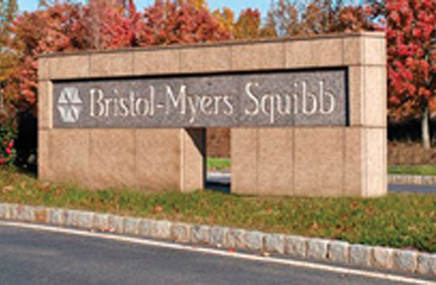Bristol-Myers Squibb is getting out of the diabetes business. The company announced Thursday that it was handing over its share to diabetes joint venture partner AstraZeneca for $2.7 billion upfront and up to $1.4 billion in milestone payments, in addition to royalty payments based on net sales through 2025. The companies teamed up six years ago to research and develop type 2 diabetes treatments.
The deal means full ownership of diabetes brands including Onglyza and Kombiglyze, Byetta, Bydureon and Symlin, as well as experimental drugs dapagliflozin (marketed as Forxiga outside the US) and metreleptin, will go to AstraZeneca. BMS said it expects “a number of R&D and manufacturing employees dedicated to diabetes will remain with Bristol-Myers Squibb to progress the diabetes portfolio and support the transition for these areas.”
Analysts at ISI Group interpreted this to mean BMS will ease, but not fully eliminate, what is calculated as a burden of around $800 million in SG&A costs associated with the joint venture. ISI’s Umar Raffat noted in a web conference following the announcement that, while the deal won’t mean BMS will suddenly have $800 million less in SG&A costs, investors will feel lighter, because the joint venture appears to have exerted a drag on non-GAAP earnings per share of 20 cents in 2012 and around 13 cents in 2013.
Offloading the diabetes category is in line with Bristol’s November announcement that it was no longer going to pursue new diabetes, hepatitis and neuroscience innovations and would instead focus on the immuno-oncology space, a category in which analysts see the biotech-thinking drugmaker as having a significant advantage.
Bernstein analyst Tim Anderson speculated in a Dec. 19 research note that BMS may have an additional motive: to raise money for a large acquisition, although he wrote that no immediate targets come to mind.
Both Anderson and Jefferies analyst Jeffery Holford also noted that the BMS-AstraZeneca joint venture was not operating smoothly. Anderson wrote that BMS mentioned the joint venture looked set to run at a loss in 2014, and ISI’s research team added that both BMS and AstraZeneca appear to be “burning $300 million to $400 million in cash” over the deal.
Despite these knocks against the joint venture, it does not appear to be a holding-the-bag situation for AstraZeneca, which is looking to steady things as generics continue to eat at its balance sheet.
Anderson wrote in a separate research note that AZ is poised to see revenues drop from $27.5 billion in 2013 to $22.2 billion in 2017. AstraZeneca, he wrote, will begin to rebuild sales momentum at a moderate pace as of 2017, and Thursday’s diabetes move could “help fill in gaps.”
Jefferies’s Holford wrote that AstraZeneca has bought itself into a tight spot, noting that Novo Nordisk’s GLP-1 Victoza (dulaglutide) has battered Bydureon and Byetta for a year, and that Eli Lilly could swoop in and increase the pressure, if its once-weekly version of Victoza gets approved and launches at the end of next year.
AstraZeneca’s other near-term challenges include weathering the impact of patent-free versions of heartburn blockbuster Nexium, lipid-lowerer Crestor and asthma med Symbicort.







